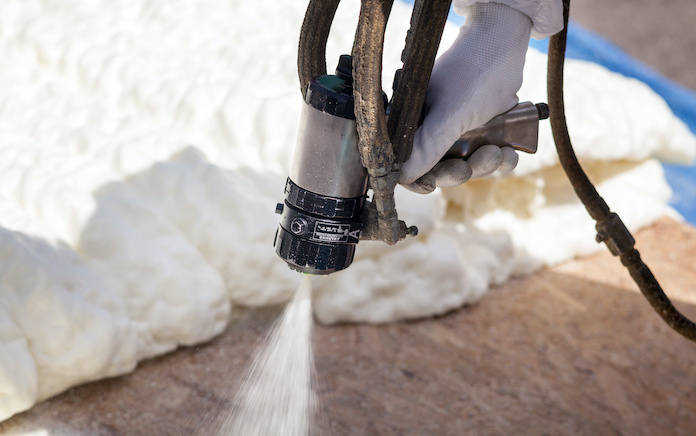How to Remove Paint from Concrete | Ep. 176

Katherine Jones, in Cherokee Village, Ark., would like to know the greatest way to take away paint from the concrete on her 60-foot-long front porch.
She does not want to use a harsh chemical stripper that could destroy the shrubs and grass all-around the porch.
The freshly painted concrete seems excellent and simple to clean up, but not long following it commences to blister or bubble. This is why we really don’t recommend portray concrete.
Here’s how to take away paint from concrete.
For a porch this measurement, rent an orbital flooring sander and select a sandpaper which is not much too coarse. You want to clear away the complete and not grind the concrete. This will be the most straightforward way to get the bulk of the paint off.
Then, you will have to use some elbow grease to sand the places the sander just can’t get to, like all around handrails and columns.
There are citrus-primarily based strippers that are non-poisonous and are not unsafe to vegetation. This type of stripper will assist in the areas the place the sander can not reach.
Also, look at renting a soda blaster. It works the very same as a sandblaster but works by using baking soda rather.
Skip to [23:12] for the comprehensive section on the Today’s Property owner Podcast.
Also on this episode:
Finest New Solution
 |
Get the very same electric power as fuel minus all the sound with Ryobi’s Whisper Walk electrical force mower. Master more>> |
Easy Solutions

Improvised Garden Sprinkler — The next time you need to h2o recently planted grass seed, trees, flowers or shrubs, and you really don’t have a sprinkler, you have a number of possibilities.
You can go out and invest in one, borrow 1 from a neighbor, or you can make a single from an vacant soda jug.
- Drill three or four 1/8-inch-diameter holes in the aspect of a plastic, two-liter soda bottle.
- Wrap some Teflon tape about the bottle treads and then screw on a female-to-woman hose connector.
- Connect a garden hose to the hose connector, spot the sprinkler in the garden with the holes dealing with up, and convert on the h2o.
Enjoy: How to Make a Sprinkler for Your Lawn or Backyard

Rescuing Utilized Rubber Gloves — Before discarding made use of latex gloves, snip off any fingers that aren’t too badly harmed or soiled, and use them as slip-on fingertip protectors when spreading glue, smoothing caulk or spraying paint.

Issue of the Week
Q: My wife and I are making a new residence. I was organizing to use spray foam insulation, but following calling several termite-bonding businesses, I was stunned that most had been hesitant to address residences with spray foam. Some flatly refused protection. Why is that, and what other choices do I have?
A: Some termite-bonding companies really do not include homes with spray foam insulation since of inspection challenges.
If you have fiberglass or Rockwool insulation, an inspector can just pull the insulation absent to seem for termite injury. With spray foam insulation, they cannot do that since it sticks to the wooden.
Some southern states have modified their creating codes to demand a termite inspection strip. This strip is installed above and under the foundation slab and lets inspectors to see termite destruction in houses with spray foam insulation.
Speak to a nearby making inspector and see what they endorse to do on a new home develop.
Skip to [31:59] for the total segment on the Today’s House owner Podcast.
More Reading
Ask a Issue! (Podcast)
Check with a concern and we could remedy it on the “Modern Home owner Podcast!” We also could use it on our nationally syndicated radio broadcast or on todayshomeowner.com.







